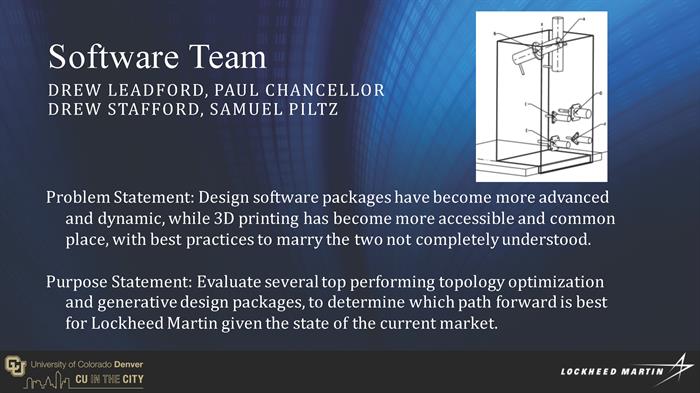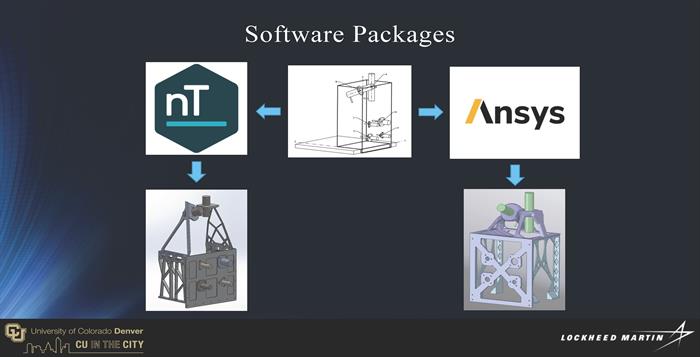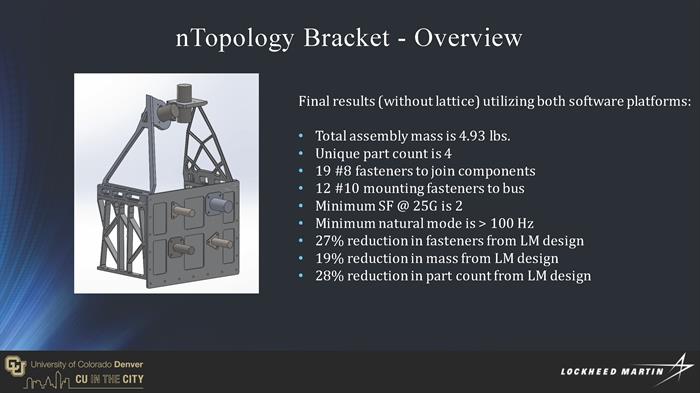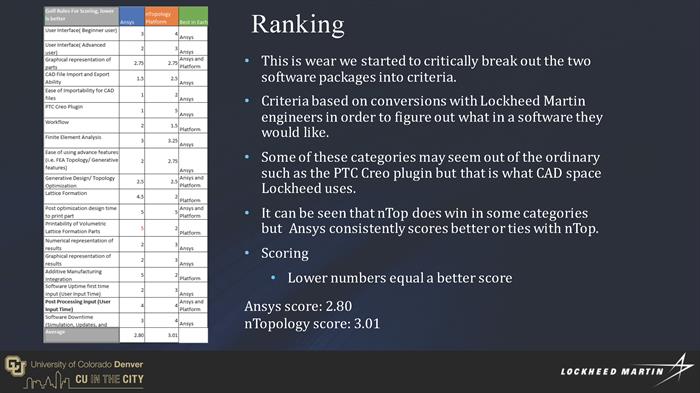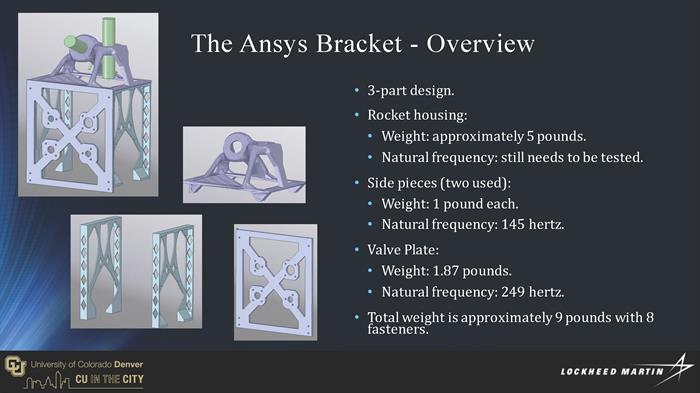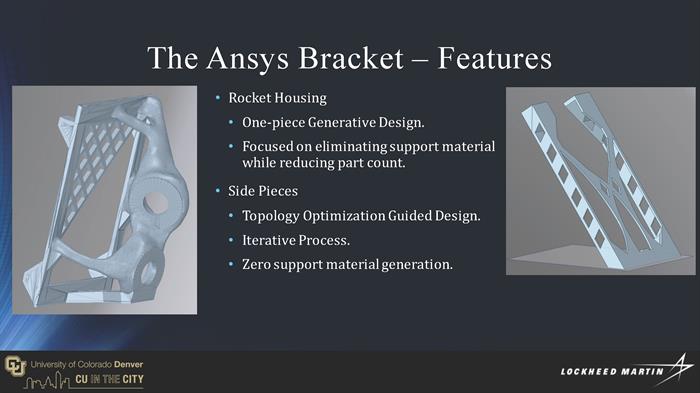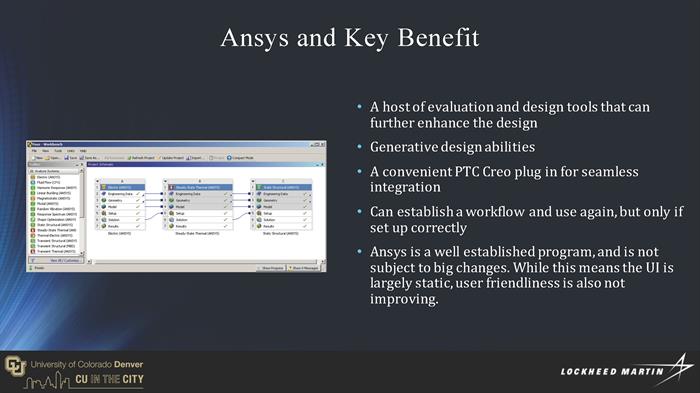Lockheed Martin GPS Satellite Bracket – Software Team
Department of Mechanical Engineering
Project Abstract
Design software packages have become more advanced and dynamic, while 3D printing has become more accessible and commonplace; however, the best practices to marry the two are not completely understood. Our guiding ethos was to use and evaluate two top performing topology optimization software packages, Ansys and nTopology Platform, for use in computer-driven design and additive manufacturing. Our goal was to create two types of bracket designs testing the limits of these software packages and to make a recommendation to Lockheed Martin regarding which software was better tasked for each type of design.
The two software packages are both capable of creating computer-driven design. The nTopology’s Platform software utilizes topology optimization, which is the process by which an existing or traditional part design is optimized – typically by removing excess material to optimize performance for given use conditions. Ansys, by contrast, utilizes generative design, by which a volume and set of boundary conditions are defined, and the part design is completely generated by the computer. Philosophically, topology optimization improves on an existing design, while generative design can create entirely new and organic structures. Both approaches are able to take advantage of complex geometries that are only made possible through additive manufacturing.
Using the topology optimization approach, first a series of rectangular pieces were designed to construct a box-like bracket. Stresses were applied to the structure to reveal on optimized truss structure for the side pieces of the bracket. With the current design meeting all design requirements, we were then able to introduce lattice structures, which gave us a marked increase in stiffness, while adding relatively little weight, all the while eliminating the need for support material.
Using the generative design approach, we created a large volume of space surrounding the mounting points of the rocket motors. After applying the boundary and loading conditions to the volume, we set a mass requirement of seven pounds. The end result was a single piece design with organic structures. The design was augmented with a diamond lattice along the base of the rocket housings to eliminate the need for support material.
Both designs have benefits and found both software packages to be powerful tools for engineers. During the process, we creating a ranking table measuring attributes that include ease of learning, software input time, repeatability of workflow, and more. In the end, based on our ranking criteria, we concluded that Ansys should likely be the software for Additive Manufacturing parts for Lockheed Martin.
